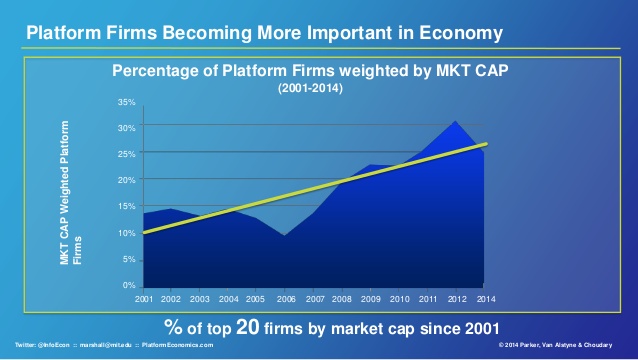Automation has transformed every aspect of modern individuals’ lives. Trivial tasks that used to take a person hours to complete, can now be performed within a matter of seconds due to technological advancements. Artificial Intelligence (AI) is one such advancement of technology that is paving the way for the prevalence of automation in every industry. The ability of AI to perform tasks autonomously is primarily possible due to its ability to be able to process large amounts of data and infer patterns and conclusions within this data, thus effectively learning tasks by itself. However, the procedures used by the AI to analyze the data are initially inputted by an administrator in the form of algorithms and statistical models. An algorithm is essentially a set of rules and the process to be followed by the machine/computer to perform a calculation/action. Modern automation stripped to its core, is a collection of algorithms and related statistical models programmed by an administrator. Due to the increased adoption of the internet, algorithms have become integrated into every aspect of our lives.
The financial credit system used in many western countries can be seen as an example of how algorithms govern our lives. The system involves gathering financial data relevant to an individual from multiple sources, followed by an algorithm that analyses the likelihood of an individual defaulting on a loan. The data gathered primarily consists of previous debts taken, payment deductibles not met and other forms of credit taken up by the individual in the past. After the careful analysis of this data, the algorithm calculates a score for the individual, the credit score. This score is then used by banks, insurance companies, and other financial institutions to determine the creditworthiness of the individual when he/she requests their services (Petrasic & Saul, 2017). In China, such a system exists not only to determine a citizen’s financial credit score, but it expands to all aspects of a citizen’s life by judging citizens’ behavior and trustworthiness, known as the Social Credit System, introduced in 2014. The Social Credit System will have a complete database on all Chinese citizens by 2020, which will be collected from a variety of sources. This scale of data collection is possible in China as Baidu, Alibaba and Tencent are the major providers of internet infrastructure in the country; they work closely with the Chinese Communist Party (Kobie, 2019). The majority of the digital footprint left by Chinese citizens is on infrastructure established by these companies thereby making it easy for the Chinese Communist Party to access its citizens’ data. This sharing of data between private companies and the government is not commonly heard of in China’s western counterparts and shows the importance of data protection laws enforced in those countries. The implementation of the Social Credit System has numerous effects on the country and citizens on economic and social levels.
On an economic level, the algorithms that facilitate the Social Credit System help bridge a major institutional gap that is the underdeveloped financial credit system in China. As mentioned earlier, the financial credit system utilizes algorithms to calculate a credit score to determine the creditworthiness of individuals. Such credit checks can make it more difficult or even deny individuals to access credits. Often, these credit checks focus on only certain aspects such as the timely manner in which we pay our debts (Petrasic & Saul, 2017). This is simply not enough to determine the creditworthiness of individuals as there are other factors at play as to why individuals pay their debts over a certain time period as they do. The commercial credit systems such as the Sesame Credit (developed by Ant Financial Services Group) can therefore be seen as more valuable in determining the creditworthiness of individuals. The Sesame credit score is arguably a better predictor of trustworthiness, as the scores take a broad range of important factors into account. This will prove to be very beneficial for the financial institutions as they will have the highest level of guarantee that the credit extended will be in safe hands. At the same time though, the citizen with a low rating will not be eligible for large loans and will be asked to pay a very high interest rate. Thus, effectively positioning the algorithm behind the Social Credit System as the decisive entity on whether a citizen can be eligible for a loan or not. The argumentation behind the decision to allow an algorithm to govern the credit eligibility of the citizens states that, due to the restrictions placed on the citizen with a lower score, it would motivate them to be better citizens thus achieving a better score. However, citizens with a lower social credit score than a certain threshold may be subject to more restrictions. For example, citizens with low social credit scores are restricted access to certain services such as (quality) education or (quality) transportation. On a social level, the Social Credit System may give rise to social segregation, where citizens with low social credits are exempted from social activities as well as leading to reduced interactions between citizens with higher social credits and those with lower social credits. Moreover, on the work floor, people with low social credit scores may fail to get a promotion because of their scores. The combined effect of restricted access to education, social segregation as well as limited career prospects, can lead to the next generation of those citizens, who have low social credits, being given unfair chances to increase their social credits, and, as a result, their quality of life. Questions arise whether algorithms account for bridging the social inequality gap or if it even strengthens it (Ebadi, 2018).
References
Ebadi, B. (2018). Artificial Intelligence Could Magnify Social Inequality. Centre for International Governance Innovation. Retrieved from https://www.cigionline.org/articles/artificial-intelligence-could-magnify-social-inequality
Kobie, N. (2019). The complicated truth about China’s social credit system. Wired. Retrieved from https://www.wired.co.uk/article/china-social-credit-system-explained
Petrasic, K., & Saul, B. (2017). Algorithms and bias: What lenders need to know. White & Case. Retrieved from https://www.whitecase.com/publications/insight/algorithms-and-bias-what-lenders-ne ed-know






